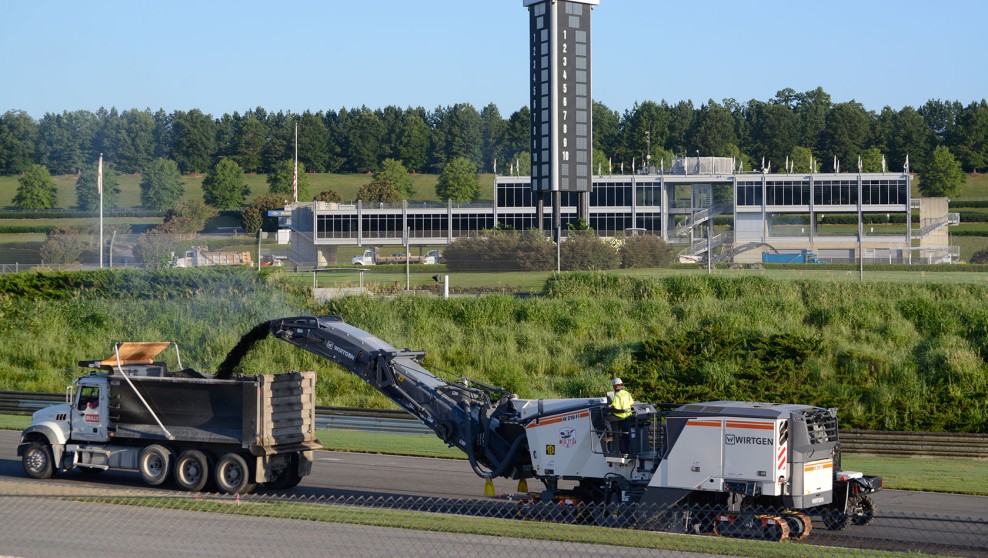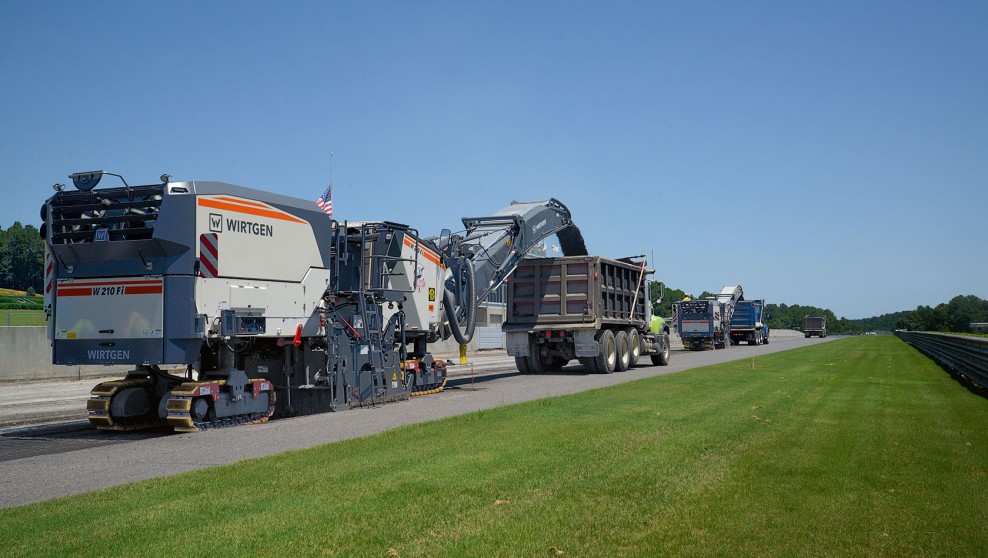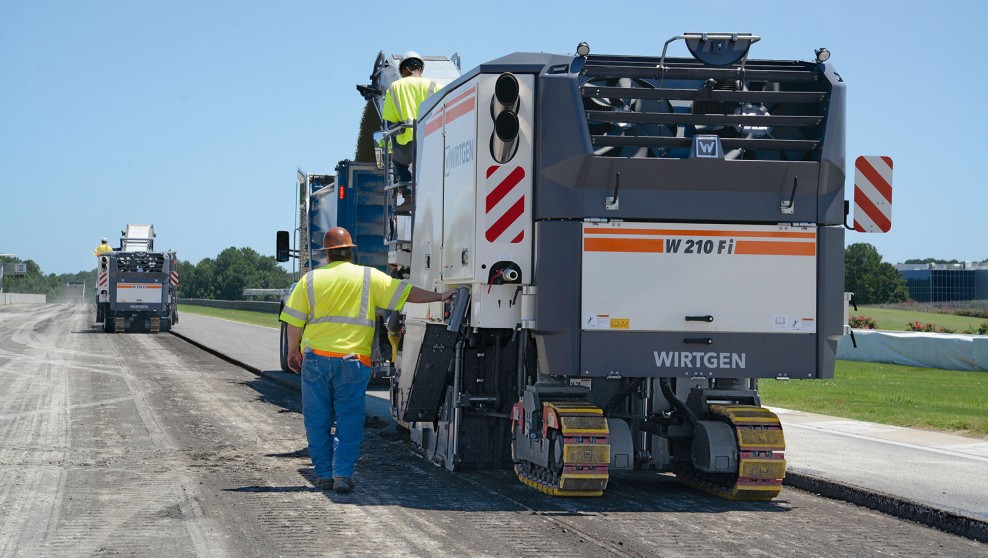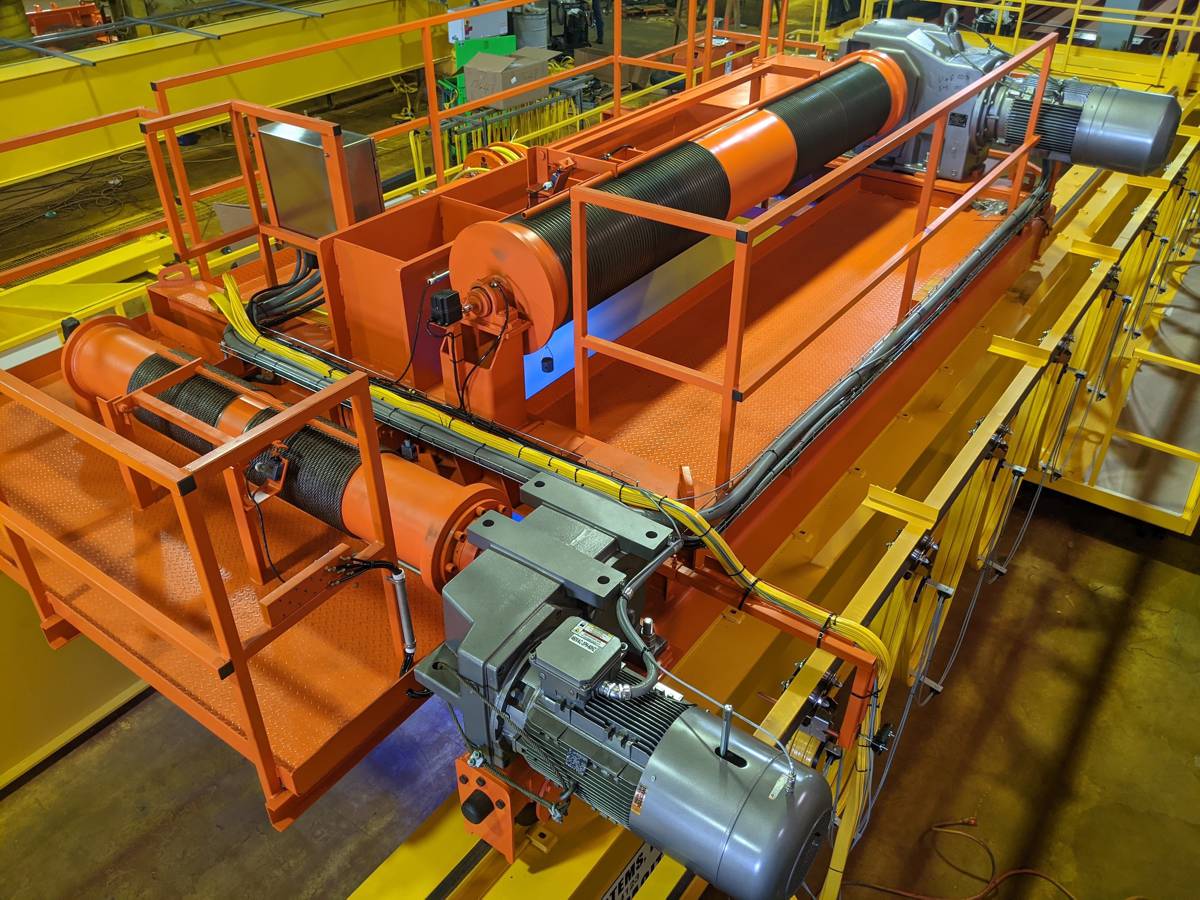Wirtgen F Series Milling Machine takes Pole Position at Alabama Racetrack
Two W 210 Fi milling machines from Wirtgen have claimed a wire-to-wire victory at the famous Barber Motorsports Park in Birmingham, Alabama.
In the process, the machine owners were extremely impressed by the new generation of large milling machines’ outstanding performance and technological innovations during one of their very first jobs on the North American continent.
With 766 PS, the two large milling machines from Wirtgen can hold their own in the face of the engine power of the race cars and motorcycles that otherwise battle to come in a few hundredths of a second ahead of each other on the 3.7-km circuit. For the rehabilitation of the racetrack on the eastern outskirts of Birmingham, precision and cost-effective milling were required in addition to horsepower and speed.
That’s why the decision fell on two brand new W 210 Fi milling machines, which worked at different depths depending on the section of track being milled. While they removed the asphalt and base layer at depths of up to 18 cm on an area of 14,500 m², the large milling machines only needed to fine-mill the asphalt to a depth of between 1.2 cm and 10 cm on a further 45,000 m².

Pit Stop in Record Time
The milling drums required for this purpose were changed on the milling machines almost as quickly as pit crews change the tires on race cars. This is because the new Multiple Cutting System makes it possible to switch out milling drums of identical working widths but with different tool spacings much more quickly and easily than with other cold milling machines.
For Kim Butler, owner of the contracted milling company Mill It Up, the changeover was so fast that she seemed to find it hard to believe: “It’s incredible. We can change milling drums in eight minutes – I’ve never seen anything like it.”
Equipped with new cutting tools, the W 210 Fi returned to the track. Compared to standard milling drums, fine milling drums have more picks and a smaller tool spacing – in this case 298 picks and 8 mm tool spacing.

Fine Milling – the Key Racing Tactic
Fine milling drums are always used when, for instance, ripples and ruts need to be removed from the road surface or when the surface’s grip needs to be improved. In many cases, this eliminates the need to pave a completely new surface layer.
The fine milling method is also used to pave thin asphalt surface layers, however. In this case, creating a uniform, level milled surface ensures that the new layer bonds perfectly with the existing surface. As a result, fine milling plays a crucial role in determining the quality of the newly paved asphalt – which was also the case at the Barber Motorsports Park.
In addition to fine milling, the levelling system also has a tremendous influence on the milling result. In this case as well, machine users can rely on systems specially developed by Wirtgen. The company’s latest development, Level Pro Active, was used in Alabama.

Staying Perfectly on Track
Because Level Pro Active is fully integrated into the machine control system, important machine functions are directly linked to each other, guaranteeing precise milling results.
For example, by raising the machine to drive over road installations, work processes can be carried out more quickly.
At the Barber Motorsports Park, the levelling system also played to its strengths when positioning the machine for the second working pass – a process that is actively and precisely supported by Level Pro Active.
The result is a milled surface of much higher quality.

Podium Finish for Both Machines
The two W 210 Fi machines underlined this on the racetrack in Birmingham, with its 17 different turns.
After completing the milling project, Kim Butler expressed her delight with the innovations in Wirtgen’s large milling machines: “I’m simply amazed by the technologies.”
The race car drivers were also extremely impressed by the new road surface. Comments such as “smooth as a pool table” or “as smooth as butter” show that, in addition to the necessary grip, the new surface also exhibits the second most important characteristic for drivers.




















